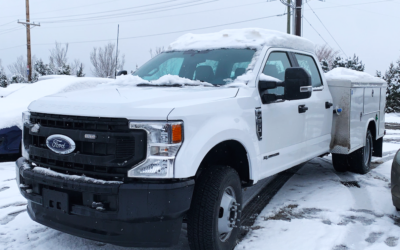Tips for Driving in the Wind
Fleet safety is an integral part of the fleet business. After all, it’s what guarantees a fleet company’s reliability and helps sustain its business due to positive word of mouth. However, when it comes to ensuring the safety of the fleet, drivers, and cargo, bad weather, vehicle malfunction, and driver negligence can all prove to be threats.
With that said, there’s one thing that’s often overlooked as a threat to the safety of fleet drivers— Driving in the wind. High, strong winds are so dangerous that they can wreak the roads and cause some serious vehicle collisions.
Experts believe that driving in high winds of even 30 to 45 mph can make driving considerably more dangerous. This is because heavy winds affect the dynamics of driving and can cause the driver to lose control of their vehicle. Strong gusts of wind can actually blow a vehicle off-road and cause it to crash into another vehicle.
Moreover, strong winds can cause heavy objects to fall on the road and cause obstructions for drivers. This is why fleet drivers must drive safely and carefully during unpredictable weather to ensure they remain safe. It is crucial that fleet drivers are prepared and know how to handle these weather conditions.
Here are some solid strategies that fleet drivers need to use to stay safe during exceptionally windy weather:
Always Wear Your Seatbelt
You simply can’t start your journey without putting on your seatbelt first. After all, buckling up is an essential part of fleet safety. If you have your seatbelt on, it will ensure that you remain safely seated when traveling through harsh gusts of winds, which might push your vehicle around.
Reduce the Speed of Your Vehicle
Is it better to drive fast or slow in windy weather? This one is a no-brainer—all fleet drivers need to practice safe and slow driving, especially during windy, dangerous, and unpredictable weather. Drivers need to make sure to slow down their vehicles as it can help them maintain control while driving in the wind.
Regardless of how good a driver you are and how much control you have over your vehicle, speeding combined with harsh winds can lead to nasty accidents. This is because if your vehicle skids a bit too much to one side due to the wind, you won’t be able to control it due to its high speed. This is why it’s better to be safe than sorry and to slow down your vehicle when driving in the wind.
Keep Both Your Hands on the Wheel
When driving in high winds, an essential tactic is to have the most control over your vehicle. One solid way to make sure that your vehicle is in your control is by having a firm grip on the wheel. This will allow you to react to particularly strong gusts of wind.
If the wind causes your vehicle to shift or causes heavy objects like trees or power lines to fall on the road, having both of your hands on the wheel will allow you to safely maneuver your vehicle out of harm’s way.
Pass Other Vehicles Smartly
In windy conditions, you need to get your bearings straight and be extra careful when passing another vehicle on the road. Even though you might have exceptional control over your vehicle, you can’t say the same about the other driver. They might swerve their vehicle unexpectedly and cause a collision. So, to ensure fleet safety, just be careful when passing and make sure that you don’t pass too close to another vehicle when driving in the wind.
Keep an Eye Out for Fallen Objects and Downed Power Lines
As mentioned earlier, strong gusts of wind can cause dangerous power lines, trees, and other debris to fall on the road. This is why you must be careful and maintain a clear line of sight while driving so you don’t crash into these objects. This is particularly true for downed power lines, which you must never drive over. This is because downed power lines may still be carrying high voltages, which can be particularly dangerous to drive over.
Avoid Driving Near Big Buses and Rigs
The bigger your vehicle is, the more difficult it’s going to be to control it when driving in windy conditions. This is why drivers of bulky vehicles such as rigs and buses might face some trouble staying in their lane during windy conditions. Since large vehicles have a lot of wind surface, a strong gust of wind can easily cause them to flip over! Due to their large size a bus or rig will easily crush any vehicle that’s being driven adjacent to them. So, make sure that during harsh conditions, you steer clear of these bulky vehicles and stay out in the open.
Guarantee Safety In Windy Conditions
To ensure fleet safety, you need to be extra vigilant and careful while driving in exceptionally windy weather. To recap, here are the things that you need to do to stay safe:
- Make sure to fasten your seatbelt before you start your journey.
- Always drive slowly to maintain steady control over your vehicle.
- Keep both of your hands on the wheel at all times.
- Try to avoid passing another vehicle and if you do, then do it smartly.
- Keep an eye out for fallen debris such as trees, billboards, and powerlines.
- Avoid driving near large vehicles such as rigs and buses.
- Make sure to follow the above-mentioned tips to stay out of harm’s way!
If you’re looking for work trucks, Summit Fleet offers the right vehicles for any job, delivered anywhere in the United States and Canada. Contact Summit Fleet today to get a quote.






